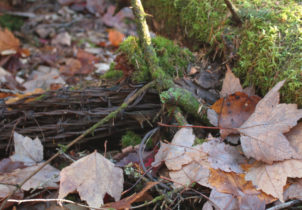Atelier et intervention performative et atelier présentés en collaboration avec Devora Neumark lors du symposium THE IDEA OF HOME, organisé par Dr Ruth Balint et Dr Julie Kalman, University of New South Wales, Sydney, Australie, 1-2 novembre 2010.

The Second World War was the catalyst for the uprooting and displacement of millions of people, leading to the category of the refugee in western legal thought and the perception of exile as a newly modern phenomenon. The loss of home and the mourning of displacement, it has since been argued, became the core of the modern condition. Theodore Adorno, exiled to America during the war years, was to write upon his return to Germany that: “Dwelling, in the proper sense has become impossible”, and that, it is “part of morality not to be at home in one’s home.” For Adorno, the home could no longer be understood as a place of physical refuge, although exile also taught him that language, rather than spatial territory, was what ultimately constituted a sense of belonging. Since then, the loss of home and the impulse of return have become universal themes of the recent history of migration.
Many scholars in recent decades have begun to refashion older notions of exile, transferring the qualities of marginality, instability and loss into desirable qualities of the postmodern condition, while at the same time asserting the home as a myth. Nomadism and diasporism have become the dominant explanatory modes of existence in a global, deterritorialised, world. The imagination of the utopian home is now more often a virtual one, and even the phenomenon of videoing, or blogging about, one’s home space online has transformed the association of privacy into one of projection, instant transportation and mass communication. However as Eva Hoffmann notes, the new postmodern scholarship of home and exile is problematic in that it underestimates the sheer human cost of exile; it also leads to a dangerous devaluing of the importance of actual space and territory in the politics of the dispossessed. Many are still fighting, killing and dying, for soil, and for the right of return to homelands.
This conference thus asks what forms the idea of home have taken since World War Two.
Dr Ruth Balint et Dr Julie Kalman
Extracts from Call for papers: The Idea of Home symposium
Conference Summary
CRÉDIT: Photographie, Louise Lachapelle